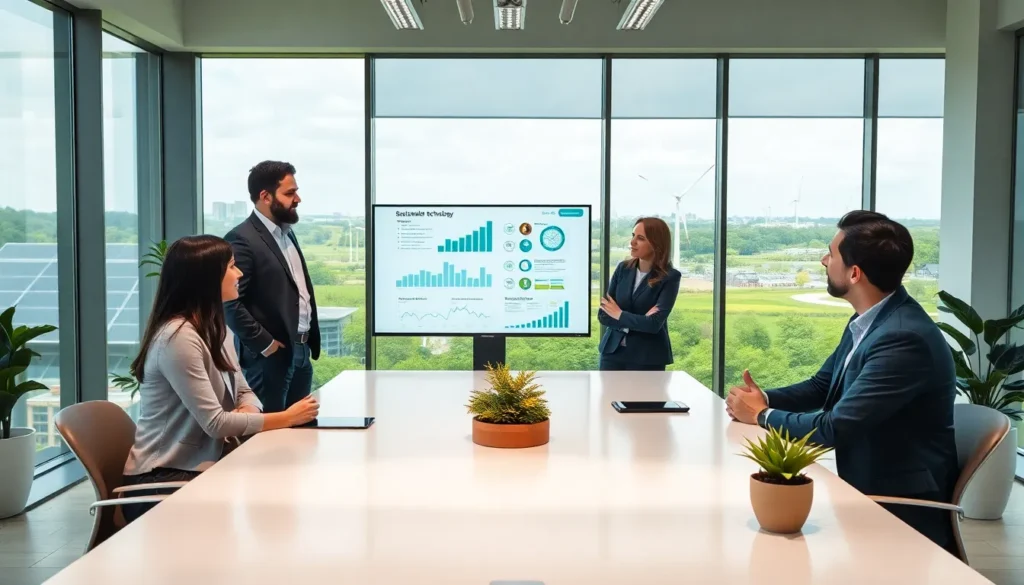Table of Contents
ToggleHave you ever wondered what sustainable technology really is? While it might sound like a fancy buzzword tossed around at eco-friendly parties, it’s actually a crucial concept in our rapidly changing world. Imagine a future where technology doesn’t just advance society but helps save the planet at the same time. Sounds like a dream, right? Well, hang on to your solar panels because we’re diving into the fascinating realm of sustainable technology. Get ready to explore how innovation meets eco-consciousness with a wink and a nod.
Understanding Sustainable Technology

Sustainable technology involves developing tools, systems, and processes that meet present needs without compromising future generations. This blend of innovation emphasizes eco-friendliness, efficiency, and resource conservation. From energy-efficient appliances to renewable energy sources, each advancement aims to minimize environmental impact while enhancing quality of life. The philosophy behind this approach is simple: technology should not only be smart but also responsible, promoting harmony between humanity and the Earth.
The Importance of Sustainability in Technology
In today’s world, the importance of sustainability in technology cannot be overstated. As climate issues worsen, the need for eco-friendly practices becomes more obvious. These technologies help reduce carbon footprints, lower energy consumption, and conserve natural resources. Also, businesses and consumers alike are demanding greener solutions. By aligning technology with sustainability, companies can achieve not only compliance with regulations but also potentially greater market appeal. Think of it as a win-win: healthier planet, healthier profits.
Key Principles of Sustainable Technology
- Resource Efficiency: Utilizing fewer resources to produce goods and services not only cuts costs but also aids the environment. Sustainable technologies often focus on optimizing resource usage through innovative designs.
- Renewable Energy Utilization: Emphasizing the use of renewable energy sources like solar and wind power minimizes dependence on fossil fuels. This shift not only reduces greenhouse gas emissions but also promotes energy independence.
- Life Cycle Assessment (LCA): Understanding a product’s impact throughout its life cycle is essential. By examining how materials are sourced, manufactured, used, and disposed of, designers can create more sustainable solutions.
- Biodegradable and Recyclable Materials: Using materials that can easily break down or be reused helps reduce waste in landfills. Sustainable technology often incorporates eco-friendly materials to close the loop on production.
Examples of Sustainable Technologies
- Solar Panels: Turning sunlight into energy isn’t just a sci-fi dream: it’s a reality. Solar panels generate clean energy and can drastically cut energy bills for both residential and commercial spaces.
- Electric Vehicles (EVs): EVs reduce dependency on gasoline and lower emissions. With advancements in battery technology, they’re becoming more efficient and affordable every year.
- Smart Homes: Equipped with smart devices that optimize energy usage, smart homes contribute to sustainability. These technologies allow residents to monitor and control energy consumption effortlessly.
- Water Purification Technologies: Innovative filtration systems are providing clean drinking water in areas where it’s scarce, using far less energy than traditional methods.
Challenges and Considerations in Sustainable Technology
While the potential for sustainable technology is promising, several challenges persist. Cost is a major factor. The initial investment in sustainable solutions can be high, deterring companies from making the switch. Also, technical limitations often hinder widespread adoption. Not all regions have access to the necessary infrastructure or resources to carry out sustainable technologies effectively.
Finally, there’s the knowledge gap. Many stakeholders, from consumers to businesses, lack awareness of sustainable technologies and their benefits. Bridging this gap requires ongoing education and advocacy.
The Future of Sustainable Technology
Looking ahead, the future of sustainable technology appears bright but needs collective effort. With rapid advances in artificial intelligence and machine learning, innovations are expected to accelerate. As electric vehicles become more mainstream and solar technology improves, the industry will likely see further evolution.
Investment in research and development will be crucial. Governments, businesses, and individuals must collaborate to create a sustainable ecosystem. As sustainability trends gain momentum, it’s critical for consumers to support companies prioritizing eco-friendly practices.







